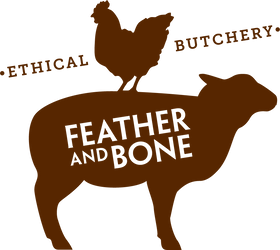Food labelling: canny consumers should search for the source
Article published in 'The Australian', 30 May, 2015
Go shopping for food or sit down at a restaurant or cafe and you’re likely to be bombarded with assurances that everything is fresh, local, sustainable, seasonal, ethical, nutritious and/or Australian. In the shops and on television, you can barely see past the chefs and media personalities clamouring to provide testimonials. Packaging is jammed with claims about “goodness” and “trust” and, if the photographs are any guide, every farm is a green swathe of lush perfection with one or two plump, healthy animals gambolling joyfully across the verdant expanse. In many ways this is encouraging.
Retailers are responding to growing consumer preference for products that are healthy, ethically produced and local. But these images speak of a romantic idea of food production: clean, uncluttered and safe.
In reality, things are going seriously wrong in our food chain.
In just the past four months, a deadly fungus threatened to wipe out singlespecies banana crops in Queensland; a NSW piggery reported an outbreak of golden staph skin infections among its workers; live Australian cattle were bludgeoned to death at unregulated Vietnamese abattoirs; 500 pigs died of heatstroke when a piggery airconditioning system failed; ABC TV’s Four Corners exposed exploitative labour conditions on Australian farms and in food processing factories; and possibly most disturbingly for consumers, a Hepatitis A outbreak was linked to imported frozen berries.
How are we to reconcile mounting evidence that our food chain is severely compromised with all the marketing to the contrary?
Few things focus the mind like the imminent possibility of contracting a serious disease. Particularly when the source may be lurking as close as your kitchen freezer, in the fruit you’ve been happily putting in your nutritious breakfast smoothie. Nannas Frozen Berries (“The taste you can trust”), containing fruit sourced from countries including Canada and Chile and packed in China, was found to be the common factor among 34 confirmed cases of hepatitis A in Australia.
There was an outcry. How could something as simple as a pack of berries carry such complex, far-flung lineage? How could a contaminated product breach our carefully regulated borders? Where else might danger lurk?
On the upside, the scare did provoke a long overdue conversation about where our food comes from. We learned that it pays to read the fine print. Without carefully reading the label, most shoppers wouldn’t easily discern that Nannas berries were so well travelled. This is intentional because, given the choice, most of us wouldn’t buy fruit that has been shipped around the world, handled by multiple businesses in different countries with food safety systems that can fall way short of our own.
Despite decades of pressure from advocacy groups who point to glaring inconsistencies in food labelling regulations, it took the frozen berries scare to push Agriculture Minister Barnaby Joyce to call for another review of country of origin labelling regulations. While close examination of a label may reveal a food’s country of origin, it won’t tell you how it was produced.
“Packed in China” sounds relatively innocuous, but what does it really mean? Food travels across the world in unprecedented volumes, and it is a daunting task for our regulators to monitor observance of our high standards at every point of the journey. We took some comfort in the fact those compromised berries were imported; the problem lay offshore.
But there’s trouble at home, too.
Just because a product is made in Australia doesn’t mean you’ll always be able to uncover where it came from or how it was produced. Coles’ Finest Free Range Pork Mince, for example, is from pigs “Born and raised on carefully selected RSPCA Approved farms ... our free range pigs forage, roam and socialise in the great Australian outdoors”. Which farms? Where in the great Australian outdoors?
A cursory read of the RSPCA Approved Farming Scheme Standards 2011 (it’s on the association’s website) doesn’t provide a specific explanation of the definition of free range. In fact, it specifies in at least two places that “RSPCA Standards do not require pigs to have access to an outdoor or range area”.
This is baffling. How can a pig be free range if it’s not outdoors? Is the pork in this mince from pigs that are foraging, roaming and socialising in the great Australian indoors?
Of course, we have only ourselves to blame for this state of affairs. Our genius for invention has produced farming technology that seeks to circumvent the messy, inefficient unpredictability of nature, allowing a very small number of us to produce food for the masses.
During the past 60 years, the frenzy to produce more food, faster and distribute it further has given rise to a “factory farm” model designed to grow or make huge volumes of the same product by repressing the inherent unpredictability of natural systems. Using an arsenal of chemicals, genetic engineering and an elastic approach to ethics, this production model has been outrageously successful and most of the food we eat in the Western world, from corn to pork, is now grown on large scale, single species factory farms.
But there is mounting evidence that this success comes at a great cost.
Anaesthetised by choice and abundance, consumers have been largely unaware of the remarkably rapid rise of factory model production occurring outside our cities. Seduced by jingles, glossy packaging and the convenience of one stop shopping, we wander the supermarket aisles like Stepford wives, unquestioningly accepting the most fatuous of claims.
We’re just happy that you can buy milk for $1 a litre, without stopping to think how much of that dollar may go to the farmer or what the consequences may be for the cow that produced it. How is it, after all, that milk can be cheaper than bottled water? And mangoes in winter ... why not The notion that our diets may include periods of seasonal abstinence is a misty memory.
It’s not that we’re not well intentioned. But who has the time or inclination to inform themselves sufficiently to unpack the politics, regulations and “greenwash” around food production and marketing? As the frozen berries demonstrated, we’re happy to not to look too closely if the product is cheap and attractive.
The food production system has become so opaque that all we’re left with is trust. This explains the emergence of a buzzword that you’ll be seeing more of soon. Along with overused words such as sustainable and ethical, expect to see the word 'transparent' being bandied about by those with a vested interest in gaining your confidence.
Early this month at Beef Week in Queensland, the director of sustainability for McDonald’s worldwide supply chain was quoted by ABC Rural as championing “not just transparency, but having credibility that it is transparent, so it’s not just saying what you’re doing, it’s kind of showing what you’re doing as well”.
Until Australia’s regulatory framework catches up, that remains to be seen. What can be seen is the growing influence of consumers worldwide. McDonald’s is talking transparency only is because it’s losing market share overseas to newcomers such as Chipotle, a US chain of Mexican fast food restaurants that has crafted its offer in response to a clear message from consumers that they want greater accountability, transparency and integrity.
Locally, Coles and Woolworths have responded to consumer pressure by banning cage eggs and sow stalls. Now we need to demand more transparent labelling so consumers can work out where their food comes from and make informed choices.
The decisions you make at the checkout are proving to be the most effective change agent in the retail sector. Never underestimate the power of one.
ETHICAL EATING 101
Australia’s food and safety standards are among the most stringent in the world, but the lack of consistent, national standards governing production methods leaves consumers without clear guidelines on which to make purchasing decisions. Complex and opaque food labelling doesn’t help.
The best thing we can do is apply common sense and take heart from the fact our wallet is our most powerful weapon in the fight to make our food system more transparent and accountable.
An excellent source of independent, well-researched information about Australian food is the Flavour Crusader site and the work of Canberra science writer Julian Cribb.
- The first rule of thumb is to buy seasonal, fresh produce grown in Australia — preferably from within the state you live in.
- You should be able to determine where, how and when the food was grown and prepared — here or overseas.
- If it’s not labelled (for example, fresh produce from a farmer’s market), ask the seller about its provenance.
- If you can’t understand the label or its claims are unsubstantiated, it’s probably intentionally opaque. If you don’t trust it, don’t buy it.
- A farm exists or it doesn’t. It should be possible to identify the location and contact details of the farm. Packaging can’t always carry photos but you should be able to go to a website that provides more information.
- Labelling a product organic or free range when it hasn’t been certified as such is incorrect and misleading. If you can’t see evidence of certification, assume it’s a false claim.
- Australia has seven organic certifying bodies, at least three freerange standards for pigs, meat chickens and egg chickens, and a host of other state and industrybased production standards. There can be significant differences in the conditions required for meat chickens. For instance, the FREPA (Free Range Egg & Poultry Australia) Free Range standard, the RSPCAapproved Free Range standard and the Humane Choice Free Range standard.




Leave a comment